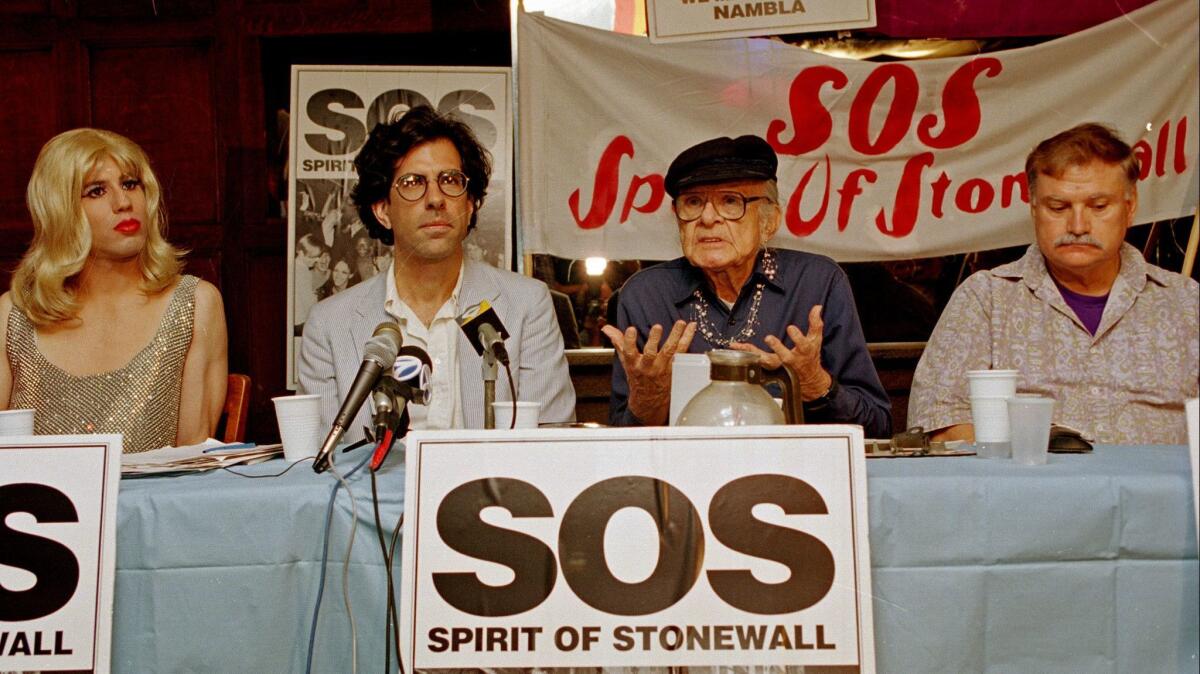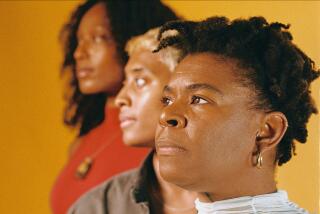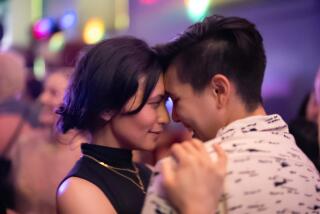Op-Ed: Stonewall was important, but the LGBT movement’s L.A. roots were essential
- Share via
Fifty years ago this week, the modern LGBT movement was launched when police raided the Stonewall Inn in Greenwich Village and the bar’s patrons rose up and fought back. At least that’s what you have probably read and heard again and again.
But just as history is said to be a story told by the victors, gay history is a story often told by New Yorkers, who see our past through their own narrow lens.
This is not to minimize the Stonewall riots. They were an important moment, perhaps even a turning point, in the LGBT historical narrative. But history is much more complicated than any single event. And at the time activists were protesting at the Stonewall Inn, a robust movement for gay rights already existed in Los Angeles.
I know this because 50 years ago, following years of political activism, a group of pioneers — some known collectively as the Gay Liberation Front — began offering mental health and other services to the LGBT community right here in the City of Angels. And that effort gave birth to what is now the largest LGBT organization on the planet: the Los Angeles LGBT Center, which I head today.
But I’m getting ahead of myself.
Perhaps befitting a Hollywood movie script, one of our movement’s earliest heroines was a secretary at RKO Pictures named Edythe Eyde. In 1947, using her spare time and typewriter at RKO, Edythe (using the pseudonym Lisa Ben — an anagram for lesbian) began the first lesbian magazine, Vice Versa. Nine editions of the magazine were individually typed with carbon copies and distributed by hand at the If Club, one of L.A.’s first lesbian bars. When RKO was sold, Edythe had to give up her work on the magazine, but it would forever leave its mark on LGBT journalism.
Just three years later, again in Los Angeles, a group of gay men banded together to start an organization that many consider to be the genesis of the modern gay rights movement. Harry Hay, a brilliant, outspoken member of the Communist Party, gathered a group of like-minded gay friends and started the Mattachine Society. Meeting in secret, the group was conceived by Hay as a fraternal order that would operate as “a service and welfare organization devoted to the protection and improvement of Society’s Androgynous Minority.” Before long, there were Mattachine chapters around the country, including New York City.

Not long thereafter, One Inc. — an offshoot of the Mattachine Society — started publication of ONE, a monthly magazine that was the first U.S. pro-gay publication. ONE sold openly on the streets of Los Angeles for 25 cents a copy. After being declared obscene by the U.S. Postal Service in October 1954, One Inc. sued and ultimately won before the U.S. Supreme Court — the first such ruling to deal with homosexuality and free-speech rights for the LGBT community.
Clearly, there was beginning to be a critical mass of gay activism by the late 1950s in L.A., though it was largely operating under the radar. It was about to get far less covert, however, thanks to an inconspicuous doughnut shop on skid row.
Cooper Do-nuts was a small cafe located between two gay bars — Harold’s and the Waldorf — on Main Street in downtown Los Angeles. A hangout for lesbians, gay men, transgender folks, hustlers and drag queens, the shop — and its clientele — were often harassed by police. In May 1959, when two police officers attempted to arrest several LGBT patrons simply for congregating at the shop, customers flooded into the streets, throwing coffee cups, trash, spoons and doughnuts at the officers, who fled. When they returned with reinforcements, the protest continued and the street was shut down for an entire day. The Cooper Do-Nuts protest is widely considered to be the first gay political uprising — 10 years before Stonewall.
By the mid-1960s, there were gay bars and clubs throughout Los Angeles — the Patch in Wilmington, the Queen Mary in Studio City and the Black Cat in Silver Lake, to name a few. Police harassment was a fact of life at all of these establishments.
On New Year’s Eve 1967, undercover police officers raided the Black Cat and arrested several patrons for kissing; they beat two bartenders until they were unconscious. On Feb. 11, more than 200 demonstrators gathered outside the tavern to protest the raid and police brutality. The group that sponsored the protest, Personal Rights in Defense & Education, or PRIDE, published a newsletter that in September became the Los Angeles Advocate (later becoming the first national LGBT magazine, the Advocate).
In the midst of this social upheaval and political activism, a small group of activists who would become the founders of the Los Angeles LGBT Center began to provide services to the gay community. They also rented five “Liberation Houses” that became the nation’s first facilities for homeless LGBT adults and youth.
In 1971, with $35 in the bank, the Center rented its first formal headquarters at 1614 Wilshire Blvd. We believe this to be the first time the word “gay” was proudly displayed on an external sign. Imagine being a kid on a bus headed down Wilshire Boulevard and seeing that sign: Gay Community Services Center. As I write this nearly 50 years later, it still gives me chills.
This year, as the Los Angeles LGBT Center celebrates its 50th year and Pride is celebrated throughout the world, Angelenos should be especially proud. We have been a force in the struggle for full human dignity and equality for the LGBT community from the earliest days. Millions of people in many cities have contributed to that struggle. But here in the City of Angels, we need not march in anyone’s shadow.
Lorri L. Jean is the CEO of the Los Angeles LGBT Center, the world’s largest LGBT organization.
Enter the Fray: First takes on the news of the minute »
More to Read
A cure for the common opinion
Get thought-provoking perspectives with our weekly newsletter.
You may occasionally receive promotional content from the Los Angeles Times.










